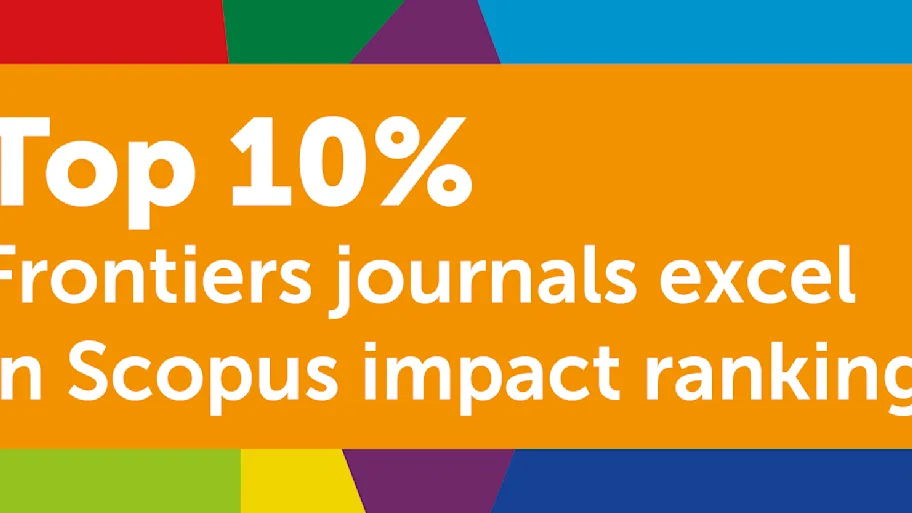
- Science news
- Environment
- From chili-heat pain relief to blue whale migration: 5 Frontiers articles you won’t want to miss
From chili-heat pain relief to blue whale migration: 5 Frontiers articles you won’t want to miss
by Angharad Brewer Gillham, Frontiers science writer

Image: Shutterstock.com
At Frontiers, we bring some of the world’s best research to a global audience. But with tens of thousands of articles published each year, many often fly under the radar. Here are just five amazing papers you may have missed.
Chili to the rescue: Modulating capsaicin as a treatment for chronic itching
Pain and itching are both signals that help humans protect themselves, by prompting us to end contact with whatever causes us pain or make us itch. However, they are also key symptoms of many disorders, and can be frustratingly difficult to treat. Scientists from the Universidad Miguel Hernández, writing in Frontiers in Molecular Neuroscience, investigated whether transient receptor potential channels, which pick up sensory cues ranging from the taste of wasabi to changes in pH, could help treat pain and itching. Previous attempts to exploit these channels to stop pain and itching have not been successful because they cause overheating as a side effect, so the authors suggested that ‘soft’ modulation of the channels might be more patient-friendly, targeting only the channels that aren’t working correctly.
While there are several existing medications which use capsaicin to target these channels, they produce a burning sensation which can upset patients at the same time as improving their chronic pain and itching. The active ingredient also tends to build up on the skin, with potentially negative consequences. The authors suggest that this makes these capsaicin-based drugs ideal candidates for ‘soft’ drugs which are modulated to have fewer side-effects: if capsaicin’s pain and itch relieving effect could be achieved without the burning, many patients living with painful disorders and chemotherapy side-effects could benefit from a better quality of life.
Article link: https://www.frontiersin.org/articles/10.3389/fnmol.2022.930964/full
The age and sex of blue whales changes their migration choices
Blue whales migrate differently depending on their age and sex, finds scientists writing in Frontiers in Marine Science. Dr Christina Blevins and her team sampled baleen plates, which have slightly different carbon and nitrogen isotope signals depending on the prey the blue whales eat, to match the signals to different places blue whales are known to frequent. This allowed them to map the whales’ movements over the years before their deaths.
They found that young whales were the most erratic travelers, probably because they were inexperienced and having trouble finding food. The scientists even found nitrogen isotope signals that suggest several young whales needed to draw on the energetic resources they stored as blubber when they were nursing. Adult females were the most consistent in their migration decisions, with some variation that may have been a response to resource availability and the need to feed enough to support pregnancies. Adult males often didn’t migrate at all. Since migrating is energetically costly for blue whales, and older, larger males will outcompete younger, smaller males as potential mates for females, the scientists suggested that this represents older males remaining in a feeding ground where they know they will find mates and younger males migrating in order to follow females.
The authors also found that their results showed the Costa Rica Dome was a more significant calving ground than expected and an important base for adult females and young whales – a discovery that will help conservationists safeguard the future of these vulnerable giants.
Article link: https://www.frontiersin.org/articles/10.3389/fmars.2022.944918/full
Understanding Post-Covid Syndrome
Scientists studying Post-Covid Syndrome have discovered that levels of some natural autoantibodies (antibodies that are always in our systems without any external illness to activate them) correlate with the severity of patients’ symptoms. The international team, publishing in Frontiers in Immunology, investigated the levels of these autoantibodies because they are known to be linked to myalgic encephalomyelitis/chronic fatigue syndrome (ME/CFS), the symptoms of which overlap with symptoms of Post-Covid Syndrome.
The scientists found that levels of certain autoantibodies are correlated with the severity of patients’ fatigue, cognitive and immune symptoms, and that fatigue in particular is linked to vascular dysregulation. They also found a possible link between inflammation and cognitive impairment. Whether the changes to autoantibodies are a cause or a consequence of Post-Covid Syndrome is still unclear, but identifying this link is a step towards treating an illness that millions of people who have had Covid-19 are at risk from.
Article link: https://www.frontiersin.org/articles/10.3389/fimmu.2022.981532/full
Gut feeling: more social complexity linked to more diverse gut microbiomes in primates
Although we often think of microbes jumping between individuals as a negative thing, we now understand that each of us has a microbiome which can promote our health as well as damage it, and that in some cases microbe exchange can be positive for both our bodies and our brains. The gut microbiome may even be directly connected to the brain, because it regulates genes that affect the nervous system, and is thought to produce some neurotransmitters. Dr Pinacho-Guendulain and colleagues at the Universidad Autónoma Metropolitana in Mexico used social primates to model whether sharing microbiomes can have health benefits – do more socially complex primates have more opportunities to exchange microbes with different individuals and diversify their own microbiomes?
The authors found that, of all the potential predictors they looked at, the best predictor of a more diverse gut microbiome in socially complex primates was a larger group size, the simplest measure of social complexity. More individuals to interact with means more opportunities to diversify the gut microbiome. The health implications of this increased diversity are unclear, but may in the future offer us insights into how social living changes the health of our bodies on a microbial level.
Article link: https://www.frontiersin.org/articles/10.3389/fnint.2022.876849/full
Termites take the trash out
Scientists working in Brazil have discovered that termites, not dung beetles, are primarily responsible for removing excess cow dung from pastures. Dr Alves and his team, writing in Frontiers in Ecology and Evolution, carried out experiments in a highly fragmented area of the Atlantic Forest to find out how insect species that consume excrement – important for soil health and biodiversity – react to habitat degradation. While more species of dung beetle were found overall than species of termite, the termites were much more active in the pastures than the dung beetles. Dung beetles preferred forested areas, where termites were less active.
This termite task has important environmental implications. Dung beetles that are active in the forest can’t tolerate the hotter, drier conditions of deforested land. Termites are usually considered pests by farmers in the region, but their dealings with dung refresh the soil, improving its health, and may even reduce the emission of harmful pollutants.
Article link: https://www.frontiersin.org/articles/10.3389/fevo.2022.982602/full
REPUBLISHING GUIDELINES: Open access and sharing research is part of Frontiers’ mission. Unless otherwise noted, you can republish articles posted in the Frontiers news site — as long as you include a link back to the original research. Selling the articles is not allowed.






